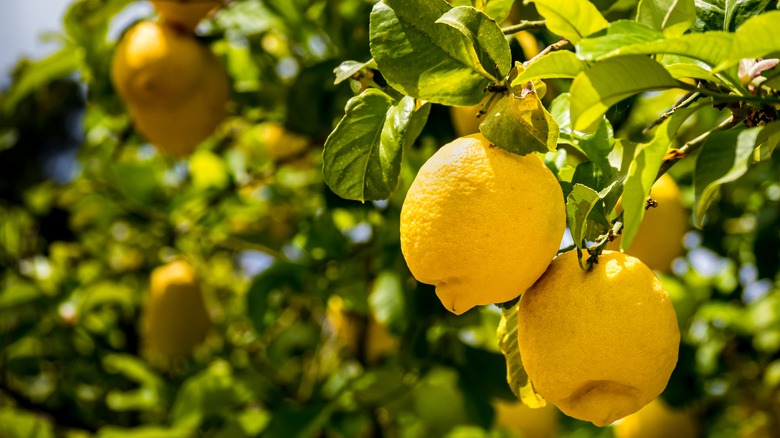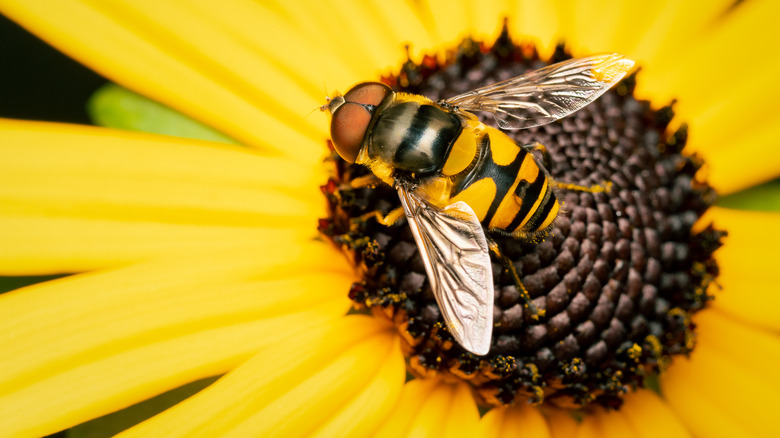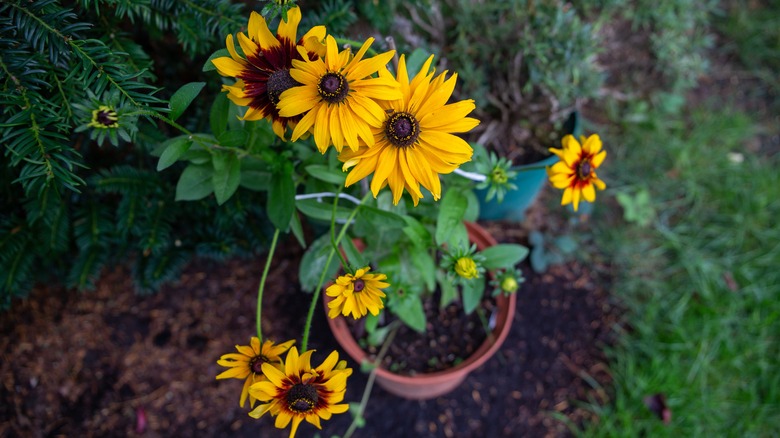The Cheery Garden Flower That Keeps A Common Citrus Tree Pest At Bay
Companion planting is a helpful gardening practice that groups particular plants together to enhance growth. Certain plants have positive relationships that can deter pests, create microclimates, or provide nutrients to one another. One example of a beneficial pairing is planting black-eyed Susans (Rudbeckia hirta) alongside citrus trees (Citrus spp.). Doing this can help protect the trees from mealybugs, as the flowers attract hoverflies (syrphid flies) which are natural predators of these pests.
Black-eyed Susans are easy-to-grow wildflowers native to the eastern United States. They are biennials or short-lived perennials that can be grown as annuals. The golden yellow, daisy-like flowers are 2 to 4 inches wide and bloom from summer through early fall, attracting a range of pollinators from hoverflies to butterflies, bees, and beetles. Although this species is short-lived, it easily self-seeds, making it a great addition to wildflower gardens. Black-eyed Susans are commonly found in prairies and meadow grasslands, as well as part of restorations of disturbed areas such as roadsides.
How do black-eyed Susan flowers benefit citrus trees?
Attracting good insects to your garden is an effective, sustainable way to manage pests. Hoverflies are prolific pollinators, attracted to the nectar and pollen of various flowering plants. Like other species within the daisy family (Asteraceae), black-eyed Susan flowers are adapted to attract pollinating insects. The quintessential capitulum flower head acts as a landing platform for hoverflies, bees, and beetles, while the darkly-colored, domed center provides a visual nectar guide. Adult hoverflies are attracted to these nectar-rich, colorful flowers, while the predaceous hoverfly larvae feed on mealybugs and other sap-sucking pests. Hoverfly larvae are active during the warmer months, which aligns with the long blooming period for black-eyed Susans.
Citrus trees are susceptible to various common pests, including scale insects, mites, whiteflies, and mealybugs. Citrus mealybugs feed on the above-ground portions of citrus trees, sucking out the sap leading to yellow leaves, wilting, and stunted growth. They also secrete honeydew, which provides an environment for sooty mold to grow. Often found in crevices, particularly between fruits, these pests can be easily missed when infestations are small and can have devastating consequences for your citrus trees. Incorporating hoverfly-pollinated flowers, such as black-eyed Susans, alongside your citrus tree plants will attract these beneficial insects to your garden and help alleviate mealybug populations.
Planting black-eyed Susans with citrus trees and managing mealybugs
In the garden, companion plants should be spaced no more than two to three rows apart from one another — or an average of 9.5 inches. Black-eyed Susans can be planted directly in the garden or grown in containers. For potted citrus trees, consider planting black-eyed Susans in containers and situating the pots around the base of your tree. In general, citrus and Rudbeckia species both enjoy full sun and well-draining soil, with black-eyed Susans being relatively tolerant to a range of growing conditions. However, be mindful that your high-nitrogen citrus fertilizer may reduce flowering for black-eyed Susans, which prefer moderate feeding. Take care to feed your citrus trees directly into the root ball to reduce spreading, or opt for container planting.
Combining black-eyed Susans with other pollinating flowers — such as calendula, marigolds, and petunias — will help to create a thriving, biodiverse habitat to help keep your citrus trees pest-free. To treat existing mealybug infestations, prune away infested branches and dispose of material. Citrus trees grown under the stress of drought or poor nutrition may be more susceptible to pests, so ensure sound care practices to maintain plant health.


